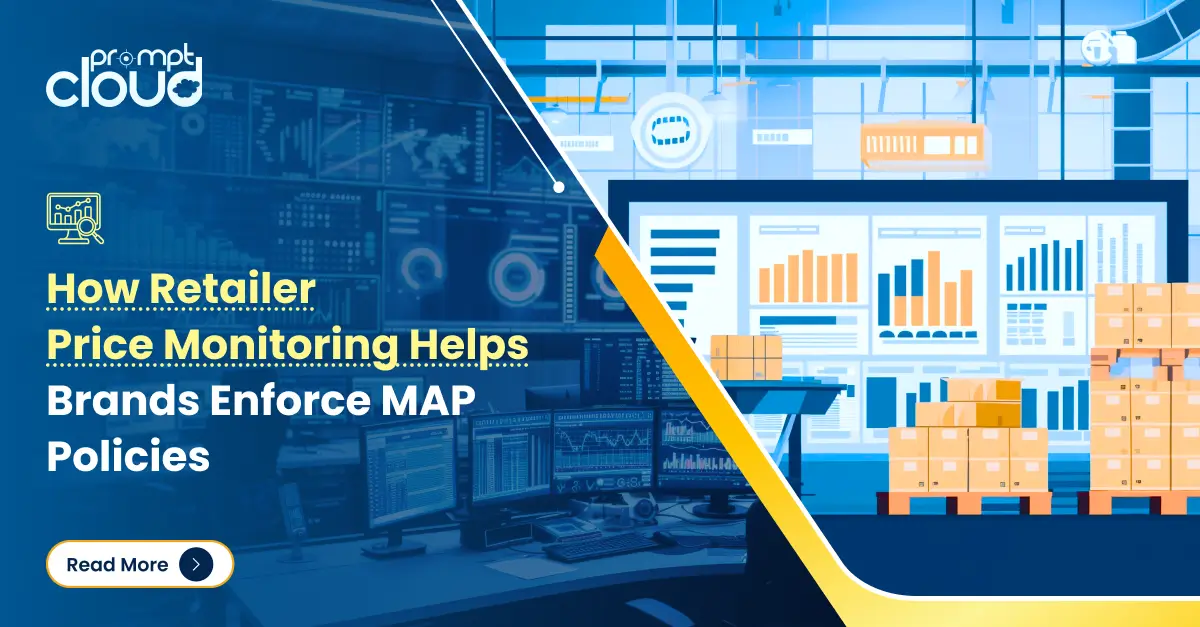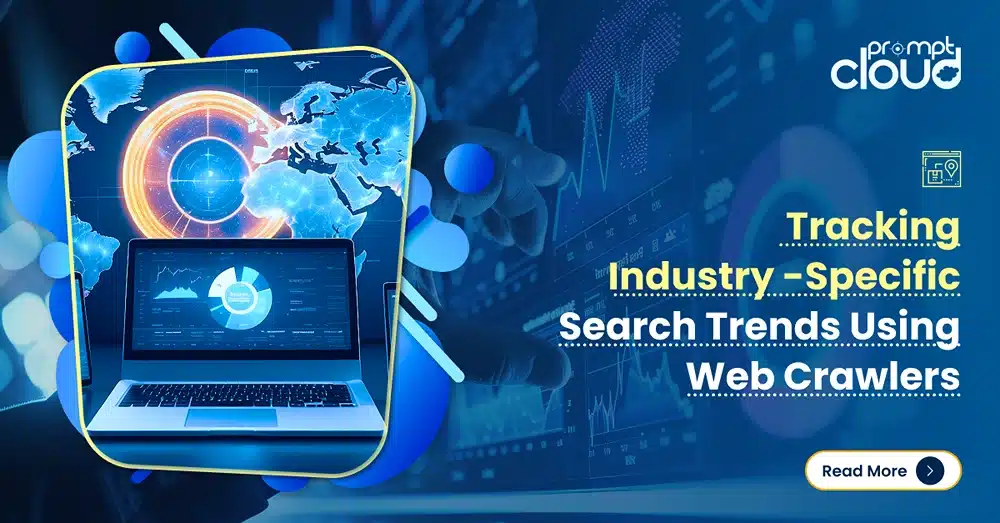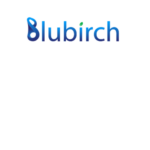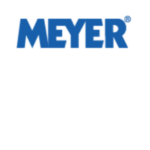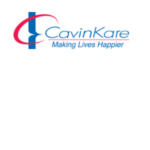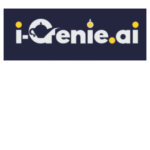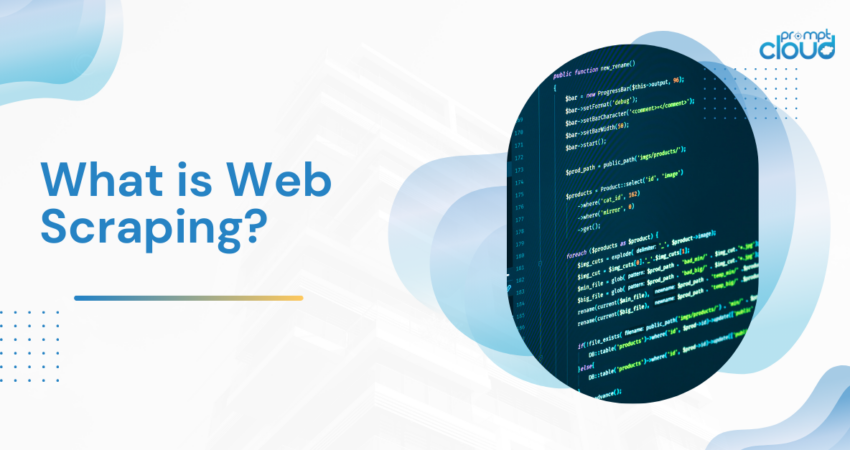
Web Scraping is known by many other names, depending on how a company likes to call it, Screen Scraping, Web Data Extraction, Web Harvesting and more, is a technique employed to extract large amounts of data from websites.
Scraping is the process where the data is extracted from various websites and repositories and is saved locally for instantaneous use or analysis that is to be performed later on. Data is saved to a local file system or database tables, as per the structure of the data extracted.
Most websites that we view regularly, allow us only to see the contents and do not generally allow a copy or download facility. Manually copying the data is as good as cutting newspapers and can take days and weeks.
Web Scraping is the technique of automating this process so that an intelligent script can help you extract data from web pages of your choice and save them in a structured format.
A web scraping software will automatically load multiple web pages one by one, and extract data, as per requirements. It is either custom-built for a specific website or is one, which can be configured, based on a set of parameters, to work with any website. With the click of a button, you can easily save the data available on a website to a file on your computer.
In today’s world, intelligent bots do web scraping. Unlike screen scraping, which only copies whatever the pixels display on a screen, these bots extract underlying HTML code, as well as the data stored in a database in the background.
Notable Benefits of Web Scraping and Web Scraping Meaning and Use Cases
1. Scraping product details and prices
Businesses crawl eCommerce websites for prices, product descriptions, and images, to get all the data possible so as to boost analytics and predictive modeling. Price comparison in recent years has made it very important for businesses to know the rates of their competitors. Unless the rates are competitive, e-commerce websites can go out of business in no time. Even travel websites have been extracting prices from airlines’ websites for a long time. Custom web page scraping solutions will help you get all the variable data fields that you might need. This way you can collect data and create your own data warehouse, for current as well as future use.
2. Custom Analysis and curation
Intended specifically for new websites/channels where the scraped data can help understand public demand and behavior. It helps new companies, to begin with, activities and products based on pattern discoveries that will gain more organic visits. This way, they will have to spend less on advertisements.
3. Online Reputation
Online reputation is very important today since many businesses depend on word of mouth to help them grow. Here, scraping from social media helps to understand current public opinion and sentiments. Then the company can even do small things that have a big social impact. Opinion leaders, trending topics, and demographic facts can be prominent through data scraping, and then these can be used to make sure that the company can repair its image, or have a greater online “public-satisfaction score”.
4. Detect fraudulent reviews
Online reviews help the new age online-shoppers decide what to buy, and where to buy from, be it a refrigerator or a car. Hence, these reviews have a lot of importance. Opinion Spamming refers to “illegal” activities, for example writing fake reviews on the portals. It is also called shilling – an activity that aims to deceive online buyers. Thus, website scraping can help crawl the reviews and detect which one to block, or which one to verify, because such reviews generally stand out among the crowd.
5. Targeted advertising based on customer sentiment
Scraping not only gives numbers to crunch but also helps a company to understand which add would be more suitable for which internet users. This helps save marketing revenue while it also attracts hits that often are converted.
6. Business-specific scraping
Businesses are able to get more services under a single umbrella to attract more customers. For example, if you open an online health portal and scrap and use data related to all doctors, pharmacies, nursing homes, and hospitals nearby, then you will be able to attract many people to your website.
7. Content aggregation
Media websites need to be instantly updated on the breaking news as well as other trending information that people are accessing on the internet. Often, the websites that are among the first to publish a story, get the most hits. Web scraping helps monitor popular forums and also grab trending topics and more.
Automated Web Scraping Techniques Have Come a Long Way
1. HTML Parsing:
HTML parsing, the commonest of the herd, can be done using JavaScript and targets linear and nested HTML pages. This fast method identifies HTML scripts from websites, that might have been done manually before, and is used for extracting text, links, screen scraping, data that is received from the back end, and more.
2. DOM Parsing:
The contents, style, and structure of an XML file are define web scraping meaning and in the DOM, short for Document Object Model. Scrapers that need to know the internal working of a web-page and extract scripts running deep inside, that have been abstracted, generally use DOM parsers. The specific nodes are gathered using DOM parsers and tools like XPath helps to crawl the web pages. Even if the content generated is dynamic in nature, DOM parsers come to the rescue.
3. Vertical Aggregation:
Companies with huge computing power, targeting specific verticals, create vertical aggregation platforms. Some even run these data harvesting platforms on the cloud. Bots are created and monitored, for specific verticals, and businesses in these platforms, with the need for virtually no human intervention. The pre-existing knowledge base for a vertical helps create bots efficiently, and the performance of the bots, thus created, tends to be much better.
4. XPath:
XML Path Language or XPath is a query language that is used when extracting data from nodes of XML documents. XML documents follow a tree-like structure and XPATH is an easy way to access specific nodes and extract data from those nodes. XPath is used along with DOM parsing to extract data from websites, no matter if they are static or dynamic.
5. Text Pattern Matching:
This is a regular expression-matching technique (commonly called regex in the coding community), using the UNIX grep command. It is generally clubbed with popular programming languages like Perl, and more recently Python- beautiful soup.
Numerous web scraping software and services are available in the market, and there is no need to be a master in all the above-mentioned techniques. There are also tools like CURL, HTTrack, Wget, Node.js, and more.
Different Approaches to Web Scraping
1. DaaS or Data as a Service
Outsourcing your web data extraction needs to a service provider dealing with data is the most recommended and the easiest way to quench your business’ hunger for data. When your data provider helps you with the extraction and cleaning of data, you get rid of the need for a completely separate dedicated team for tackling data woes and can remain relieved. Both the software as well as the infrastructure needs that your company’s data extraction techniques need are taken care of, by them, and since these companies are extracting data for clients on a regular basis, you would never have a problem that they haven’t solved, or at least faced already. All you need to do is provide them with your requirements and then sit back as they spin their magic and hand you your priceless data.
2. In-house web scraping meaning
You can also go on for an in-house data extraction if your company is technically rich. Not only would you be needing skilled individuals having worked in web-scraping projects and experts in R and Python, but you would also need the cumbersome infrastructure to be set up so that your team can scrap websites, all day and night.
Web crawlers tend to break even with the slightest change in the web-pages that they are targeting and due to this web-scraping is never a do and forget solution. You need the dedicated team to be working on solutions all the time, and sometimes, they might anticipate a big change coming in the way that webpages are storing data, and then they need to be prepared for the same.
Both building and maintaining a web-scraping team are complex tasks and should be undertaken only if your company has sufficient resources.
3. Vertical specific solutions
Data providers that cater only to a specific industry vertical are there in hordes, and these Vertical specific data extraction solutions are great if you can find one that covers your data needs. Since your service provider would only be working in a single domain, chances are, that they will be extremely skilled in that domain. The data sets might vary and the solutions they might provide you might be highly customizable based on your needs. They may be able to provide you different packages based on your company size and budgets too.
4. DIY web scraping tools
For the ones that do not have the budget for an in-house web crawling team and neither take the help of a DaaS provider, they are left with DIY tools that are easy to learn and simple to use. However, the serious downside is that you cannot extract too many pages at one go. They are often too slow for mass data extraction, and they might not be able to parse sites that use more complex rendering techniques.
How Web Scraping Works
There are several different methods and technologies that can be used to build a crawler and extract data from the web. Following is the basic structure of a scraping website setup.
1. The seed
It is a tree traversal like procedure, where the crawler first goes through the seed URL or the base URL, and then looks for the next URL in the data that is fetched from the seed URL and so on. The seed URL would be hard-coded in at the very beginning. For example, to extract all the data from the different pages of a website, the seed URL would serve as an unconditional base.
2. Setting directions
Once the data from the seed URL has been extracted and stored in the temporary memory, the hyperlinks present in the data need to be given to the pointer and then the system should focus on extracting data from those.
3. Queueing
The crawler needs to extract and store all the pages that it parses, while traversing in a single repository, like HTML files. The final step of data extracting and data cleaning actually happens in this local repository.
4. Data extraction
All the data that you might need is now in your repository. But the data is not usable. So you would need to teach the crawler to identify data points and extract only the data that you will be needing.
5. Deduplication and cleansing
Noise-less data should only be extracted and duplicate entries should be deleted by the scraper automatically. Such things should be built into the intelligence of the scraper so as to make it handier, and the data coming from it as output, more usable.
6. Structuring
Only if the scraper is able to structure the unstructured scraped data, will you be able to create a pipeline to directly feed the result of your scraping mechanism to your business.
Best Practices in Web Data Extraction
Although a great tool for gaining insights, there are a few legal aspects that you should take care of so that you do not get into trouble.
1. Respect the robots.txt
Always check the Robots.txt file, of whichever website you plan to crawl. The document has a set of rules that define web scraping and how bots can interact with the website, and scraping in a manner that goes against these rules can lead to lawsuits and fines.
2. Stop hitting servers too frequently
Do not become a frequent hitter. Web servers end up falling prey to downtime if the load is very high. Bots add load to a website’s server and if the load exceeds a certain point, the server might become slow or crash destroying the great user experience of a website.
3. It is better if you crawl data during off-peak hours
To avoid getting caught up in web-traffic and server downtime, you can crawl at night, or at times when you see that the traffic for a website is less.
4. Responsible use of the scraped data
Policies should be honored and publishing of data that is copyrighted might have severe repercussions. So it is better that you use the scraped data responsibly.
Finding the Right Sources for Web Scraping
One aspect of data scraping that bugs a lot of people is how to find reliable websites to crawl. Some quick points to note:
1. Avoid sites with too many broken links
Links are the main food for your web-scraping software. You do not want broken links to break the streamlined flow of processes.
2. Avoid sites with highly dynamic coding practices
These sites are difficult to scrap and keep changing. Hence the scraper might break in the middle of a task.
3. Ensure the quality and freshness of the Data
Ensure that the sites you crawl are known to be reliable and have fresh data.
How to Integrate Web Scraping in your Business
Whether you are selling or buying goods, or trying to increase the user base for your magazine, whether you are a company of fifty or five hundred, chances are, eventually you will need to surf on the waves of data if you want to remain in the competition.
In case you are a technology-based company with huge revenue and margins, you might even start your own team to crawl, clean and model data.
However, here I will be providing more of a generalized approach, applicable to all. With the advent of newly coined flashy words and technological marvels, people forget the main thing – Business.
- Define Web Scraping Business Problem:
- Identify the specific business problem you aim to solve.
- It could be catching up with a faster-growing competitor, gaining access to trending topics for increased organic hits, or boosting sales, possibly in a unique situation not faced by other businesses.
- Determine Data Requirements:
- Pinpoint the type of data needed to address the identified problem.
- Ask questions like, “Do you have a sample of the needed data?” and “Which websites, when scraped, would provide the most benefits?”
- Choose the Right Approach:
- Decide on the best method for obtaining the required data.
- Avoid hastily setting up an in-house data scraping team; it’s impractical and better to consider outsourcing to experienced providers like PromptCloud. They bring years of experience and have successfully tackled various web data extraction challenges.
Frequently Asked Questions
What is the purpose of website scraping?
Website scraping functions as a sophisticated tool for systematically extracting valuable information from diverse online sources. This automated process proves invaluable for tasks such as competitive analysis, obtaining market insights, or compiling datasets for computer programs. In essence, it streamlines the retrieval of web data, empowering informed decision-making and optimizing operational efficiency.
What is web scraping example?
Imagine you’re in a corporate environment where your company is keen on tracking online sentiments regarding its products. Instead of dedicating extensive time to manual review searches across diverse platforms and social media channels, web scraping presents a streamlined solution.
Strategically implementing web scraping allows the company to stay attuned to customer sentiments, identify emerging trends, and apply these insights to enhance product quality and overall customer satisfaction. This approach mirrors the utilization of a sophisticated digital tool for comprehensive market intelligence.
Is web scraping easy to learn?
It depends. If you’re familiar with programming and the web, it can be straightforward. There are tools and libraries, like BeautifulSoup in Python, that make it easier. But if you’re new, there are plenty of online guides, blogs and courses to help you get the hang of it.
Can web scraping harm a website?
The simple answer is- yes, it can, if you are not careful. If you scrape too much or too fast, it’s like bombarding a website with too many requests. This can make the site slow down or even crash. Also, some websites say in their rules that scraping is a no-go. Breaking these rules could lead to legal trouble. To play it safe, it’s best to scrape responsibly, be kind to the websites, and follow the rules.
What is web scraping used for?
Web scraping is used for a multitude of purposes across various industries, leveraging the vast amounts of publicly available data on the internet. Some of the primary applications include:
Market Research
Businesses scrape web data to gather insights on market trends, consumer preferences, and competitive landscapes, helping them make informed decisions.
Price Monitoring
E-commerce companies and retailers use web scraping to track competitor prices and inventory levels, enabling dynamic pricing strategies to stay competitive.
Lead Generation
Companies scrape contact information from websites to compile lists of potential customers for sales and marketing efforts.
SEO and Digital Marketing
Web scraping aids in monitoring SEO performance, keyword rankings, and backlink profiles to optimize online visibility and marketing strategies.
Real Estate Listings
Real estate platforms aggregate property data from various sources via web scraping, providing users with comprehensive listings.
Social Media and News Monitoring
Scraping social media platforms and news sites helps businesses monitor brand mentions, customer sentiment, and current events.
E-commerce and Retail
Online retailers and marketplaces scrape product details, descriptions, and customer reviews from manufacturers’ websites or competitor sites.
Academic Research
Researchers and academics scrape data from digital archives, publications, and forums for analysis, studies, and educational purposes.
Data for Machine Learning and AI
Scraping provides vast datasets needed for training machine learning models and artificial intelligence applications in areas like natural language processing and image recognition.
Job Boards and Recruitment
Recruitment agencies and job boards scrape job listings and candidate profiles to match employers with potential employees.
What is an example of web scraping?
An example of web scraping involves collecting product information from an e-commerce website. Suppose you run a competitor analysis business that helps clients monitor their competitors’ pricing and product assortment strategies. Here’s how web scraping would typically work in this context:
Objective
To gather detailed product information, including names, descriptions, prices, and images, from a competitor’s e-commerce website.
Process
- Identify the Target Website: Choose the e-commerce website from which you want to scrape product information.
- Inspect the Website Structure: Use browser developer tools to understand the HTML structure of the product pages, identifying the HTML elements that contain the product name, description, price, and image URLs.
- Write a Web Scraping Script: Develop a script using a programming language like Python, along with libraries such as Beautiful Soup for parsing HTML and Requests for making HTTP requests. The script would:
- Send a request to the product listing page of the e-commerce website.
- Parse the HTML content of the page to extract URLs of individual product pages.
- Navigate to each product page and scrape the required product information.
- Save the extracted data into a structured format, such as a CSV file or a database.
- Example Code Snippet
Here’s a simplified Python snippet using Requests and Beautiful Soup:
import requests
from bs4 import BeautifulSoup
URL of the product listing page
url = ‘https://example-ecommerce.com/products’
Send HTTP request and parse HTML content
response = requests.get(url)
soup = BeautifulSoup(response.text, ‘html.parser’)
Find all product page links (assuming they are contained in tags with class ‘product-link’)
product_links = soup.find_all(‘a’, class_=’product-link’)
Loop through each product link to visit individual product pages and scrape data
for link in product_links:
product_url = link.get(‘href’) # Get the URL of the product page
product_response = requests.get(product_url)
product_soup = BeautifulSoup(product_response.text, ‘html.parser’)
# Scrape product name, description, price, and image URL
product_name = product_soup.find('h1', class_='product-name').text
product_description = product_soup.find('div', class_='product-description').text
product_price = product_soup.find('span', class_='product-price').text
product_image_url = product_soup.find('img', class_='product-image')['src']
# Save or process the scraped data
print(product_name, product_description, product_price, product_image_url)Is it legal to web scrape?
The legality of web scraping depends on a variety of factors, including the jurisdiction, the website’s terms of service, the nature of the data being scraped, and how the data is used. Here’s a breakdown of key considerations:
Jurisdiction and Laws
Different countries have different laws that can impact the legality of web scraping. For example, the Computer Fraud and Abuse Act (CFAA) in the United States has been used to address unauthorized access to computer systems, which can include web scraping in certain contexts.
Website Terms of Service
Many websites include provisions in their terms of service that explicitly prohibit web scraping of their content. Violating these terms could potentially lead to legal action, although the enforceability and legal implications can vary.
Copyrighted Material
Scraping copyrighted material and using it without permission may violate copyright laws. However, scraping for personal use, non-commercial purposes, or in ways that comply with fair use provisions may not constitute infringement.
Data Protection and Privacy Laws
Laws such as the General Data Protection Regulation (GDPR) in the European Union impose strict rules on the collection and use of personal data. Scraping personal data without consent could breach these regulations.
Public vs. Private Data
The nature of the data being scraped can also affect the legality of web scraping. Publicly accessible data is generally considered more permissible to scrape than private data requiring authentication or data behind paywalls.
Ethical Considerations
Beyond legality, ethical considerations should guide scraping activities. This includes not overloading servers, respecting robots.txt files, and being transparent about the use of scraped data.
Legal Precedents
Various legal cases have addressed web scraping, with outcomes that highlight the complexity of the issue. The legal landscape continues to evolve as new cases are brought to court.
Best Practices for Compliance
To navigate the legal complexities of web scraping, consider the following best practices:
- Review and adhere to the website’s terms of service and robots.txt file.
- Avoid scraping and storing personal data without explicit consent.
- Be mindful of copyright restrictions and fair use principles.
- Consider seeking legal advice to ensure compliance with relevant laws and regulations.
While web scraping is a powerful tool for data collection, its legality is nuanced and context-dependent. Ensuring compliance with legal standards and ethical guidelines is crucial for conducting web scraping responsibly.













